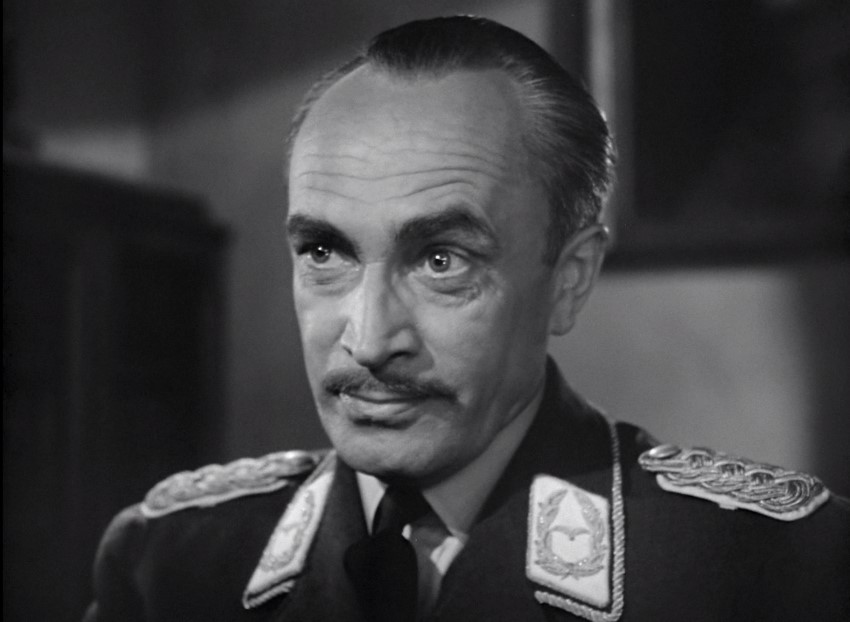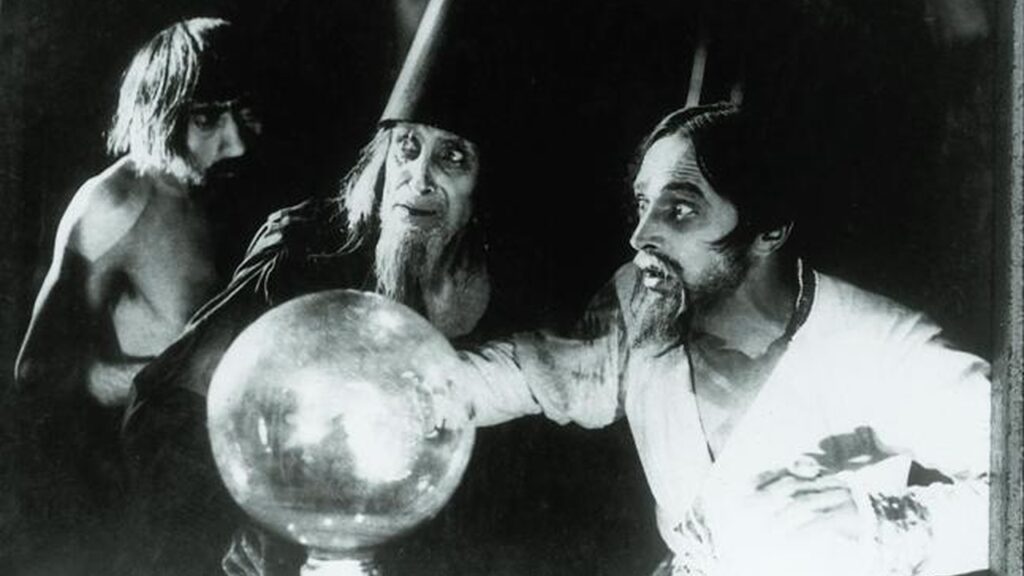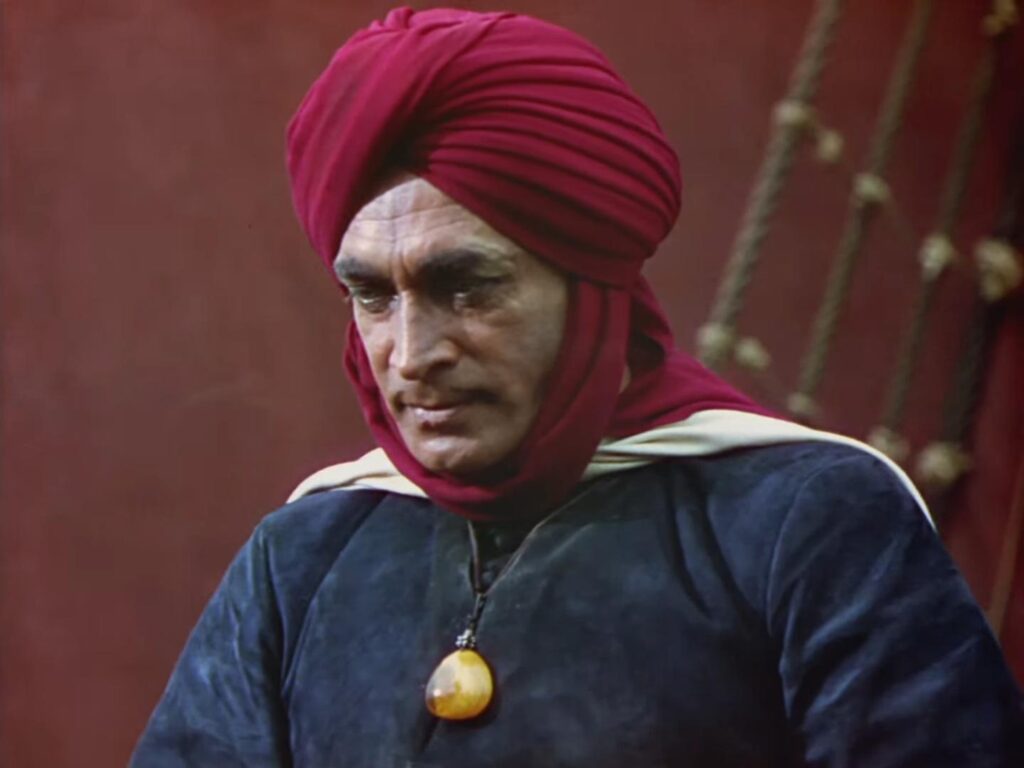The Top 5 Films of the Greatest Horror Star You Never Heard of

Sure, you’ve heard of Lon Chaney Sr. You would know Boris Kharloff’s voice anywhere. Dracula wouldn’t have been a thing without Bela Lugosi. Price, Lee, and Cushing carried the horror genre on their shoulders during its darkest decades.
But one of the greatest horror actors of all time, you’ve probably never heard of.
Okay, you probably do know of him but not from horror films. You know him as this guy

Major Strasse, the SS officer wearing a Luftwaffe uniform in the 1941 classic film Casablanca.
This was during the period of his life when Conrad Veidt thought he was on the skids. Sadly, there was some truth to that, at least compared to his glory days in the 1920s, when he was the Demon of the Silver Screen.
Veidt was born in 1893 to the family of a soldier turned civil servant. Conrad always spoke well of his father while never denying that he was a strict Prussian Dad. He was a lot closer to his mother. When “Conny’s” father had to have heart surgery and the family couldn’t afford it, the surgeon only charged the family what they could afford. This gesture touched young Conrad deeply and he vowed to emulate the life of this surgeon. Sadly, out of a class of 13 Conrad Veidt was ranked 13th. Becoming a Doctor was at best an unrealistic goal but he found another one when he starred in a school play.
His father was deeply disappointed in him but his mother never missed a performance even if he was just playing such challenging roles as Third Spear Carrier. He had favorable notices after his first starring role in 1914. A theater critic begged God to save this promising young actor from the Cinema. The Almighty had different plans
Sadly, this was in 1914. Conrad enlisted in the Imperial German Army and fought on the Eastern Front. He saw some action and was a Corporal by 1915. However, at Warsaw, he came down with both Jaundice and Pneumonia. While he was recovering he was transferred to a morale unit to help entertain the troops. His condition must have been quite serious because in 1917 he got an actual medical discharge (that was pretty rare in Germany by then).
He married his first wife and got a job in a cabaret to pay the bills while he started working in German expressionist plays. This led, naturally, to German expressionist films where he would soar.
He soon became an international star. One advantage to working in the silent pictures was that they were easy to export. Just snip out the dialog card in German and splice-in whatever language the locals spoke.
Conrad would eventually get to Hollywood, working at Universal making the modern equivalent of $37,000 a week. Sadly Talkies were just around the corner and his English wasn’t good enough yet. So he went back to Germany. Temporarily.
In 1933 the Nazi party came to power and all actors were required to state their race. Conrad Viedt was thoroughly Aryan. He was also a Prebtyrian. His wife however was Jewish, so when he reached the part on the form that said, What is your race? He very carefully wrote Jude. Goebbels personally declared he would never work in Germany again, and he did not. He left the country with his wife, never to return. He settled in Britain and started making films like The Jew Suiss (a direct rebuttal to Goebbels’s version). He found a comfortable rut playing German villains, he played a surprisingly sympathetic U-Boat commander in The Spy in Black. In 1941 he returned to America where his contract stipulated that he would only play villains.
By the time he died, Conrad Veidt’s silent films were considered old junk. There was no effort expended in preserving them, which today makes cinephiles pull their hair out in bloody hanks because what’s known about them sounds fantastic.
Saturnius directed by FW Murneau where he played the devil. Count Cagliostro. Night Figures where he played the Devil again. The Janus Head is particularly infuriating for Veidt fans because he was playing Dr. Jekyll and Mister Hyde in yet another Murneau film.
All of these are lost because of a lack of interest in film preservation. And because film acetate burns quickly in a bombing raid. But the ones that remain showcase his genius.
5. Journey into the Night.

This is the only surviving collaboration between the great expressionist director Murneau and Conrad Viedt. It’s also Murneau’s earliest surviving film. I suppose this really doesn’t count as a horror movie, however, it’s so buried in German gloom that when you are watching it you’re convinced that it is horror.
A brilliant surgeon restores sight to a blind painter who starts having an affair with the surgeon’s wife, so the surgeon abandons her. Years later the painter has gone blind again, the wife comes to the surgeon begging him to restore the painter’s sight again. He demands that she leave the painter which she does by committing suicide. The painter refuses treatment and the surgeon commits suicide.
Fun for the whole family!
This was the first movie where you see Veidt’s real talent as a film actor. He could capture the camera and make it his just by looking at it.
4. Wax Works

This is an anthology movie. Veidt headlined the Ivan the Terrible chapter. What makes his performance remarkable is that Ivan is clearly meant to be a soulless monster but Veidt succeeded in making him a pitiable creature. His Ivan was so insecure that you can’t help but feel just a little compassion for a monster in at least the form of a man.
It’s Veidt’s gift for giving his characters humanity that really shines forth here. Although nowhere near as much as the next film.
3 The Man Who Laughs

Technically not a horror film as there are no supernatural elements. This is why it isn’t number 1. However, it plays like a horror film due to the constant air of dread that pervades the whole of the work.
Veidt plays a hidden nobleman whose face was cut into a permanent smile when he was a little boy. He works with a theater company. His love interest is blind and devoted to him but he is convinced that his disfigurement is so repulsive that no woman could possibly want him. This was one of the films that he made for Universal so there is a believe-it-or-not-happy ending to a Conrad Veidt movie for a change.
The makeup was designed by Hollywood genius and sadist, Jack Pierce who would create Frankenstein a few years later. The appliances Pierce divided were absolute torture devices, it froze Veidt’s mouth into a rictus, so he carried the entire performance with his eyes alone. This movie STILL holds up on the strength of his performance.
Yes, this is the movie that inspired The Joker.
2. The Cabinet of Doctor Caligari

It’s surprising how many people are familiar with this property compared with how few have actually seen it. In 1920 some of the restrictions on German films in the former Allied countries loosened up enough for this to be imported. With Germany no longer a menace, there was a general willingness to acknowledge Caligari as a brilliant game-changer. It was revolutionary and strongly affected the Universal monster films of the 1930s.
It’s about a mysterious huckster named Caligari who keeps a prophetic somnambulist, named Cesare, in a coffin-like cabinet but does let him out for performances. Veidt is playing Cesare. Caligari brings him to animation if not wakefulness during performances.
During one of the performances a man in the audience asks how long will he live. Cesare predicts he will die by morning. The audience member is stabbed to death that night. You’ve probably worked out how Caligari makes certain his pet’s predictions come true.
The man’s friend Francis investigates and discovers that Caligari is actually the director of an asylum, who is obsessed with the legend of an 18th-century mystic named Caligari who used a somnambulist named Cesare to commit murders.
Twist ending: The whole thing is Francis’ delusion. He’s an asylum inmate, Cesare is also an inmate but not a sleepwalker. And Caligari is actually the director.
Honestly, the story itself is almost inconsequential compared to the style of its telling. This stripped-down approach of using images as barebones ideas is what made this a sensation. The sharp angular imagery creates a nightmare aesthetic.
What sells this film is Veidt’s ability to act within the framework of an expressionist production rather fight against it as some of his castmates did.
Caligari was a creation of post-Great War Germany:
“The film thematizes brutal and irrational authority. Writers and scholars have argued the film reflects a subconscious need in German society for a tyrant, and is an example of Germany’s obedience to authority and unwillingness to rebel against deranged authority. Some critics have interpreted Caligari as representing the German war government, with Cesare symbolic of the common man conditioned, like soldiers, to kill.”
Roger Ebert declared it to be the first true horror film. He was arguably correct all of the elements except the supernatural are present and you really don’t need that for horror.
Somebody’s going to yell at me for not making this number one. I sympathize and it was struggle but at the end of the day this list is about Veidt and Caligari buries him.
1 The Hands of Orlac

While this is my favorite of Veidt’s films, it’s not everyone’s and I can respect the arguments for other films on my list belonging in this slot. Truthfully, I had trouble deciding the order myself but this was always going to be my number one.
A brilliant pianist named Paul Orlac loses his hands in a train accident. Great trainwreck, by the way, it really holds up. A surgeon attaches new hands to Orlac. The pianist later discovers the hands belonged to an executed murderer.
Orlock becomes obsessed with the idea that his new hands are giving him the nature of a murder. He can’t bring himself to touch his wife with his new hands but does run his fingers through a maid’s hair in a hyper-creepy scene.
While not expressionist it does use plenty of those techniques. Veidt was able to make it look like he was trying to distance himself from his own hands he managed the all-important feature of making it look like his hands were not really a part of his body and that Orlac didn’t really have control over them.
It was better thought of when it was released than it is today, mostly because it’s not Caligari.
Honorable Mention: The Thief of Baghdad (1940).

This one is not a horror movie at all but his turn as Jaffar the evil Magician and Vizier was the direct inspiration for Jaffar in Aladdin. Even Disney admits it.
Disney could not manage to bring what Veidt could in terms of pure smolder. Women in 1940 could totally get why the princess was completely under his spell. And kind of envied her.
******
Both of his parents had had serious cardiovascular problems, so did Conrad. He was on Nitro most of his life. He had a heart attack and died while playing golf in 1943 at the age of 49. Casablanca was the last of his films that he would see.
In what feels like far too brief of a career Conrad Veidt’s performances created the foundations for the entire genre of the horror film. Everyone from Dracula to Jason owes him a profound debt.
Discuss on Social Galactic

